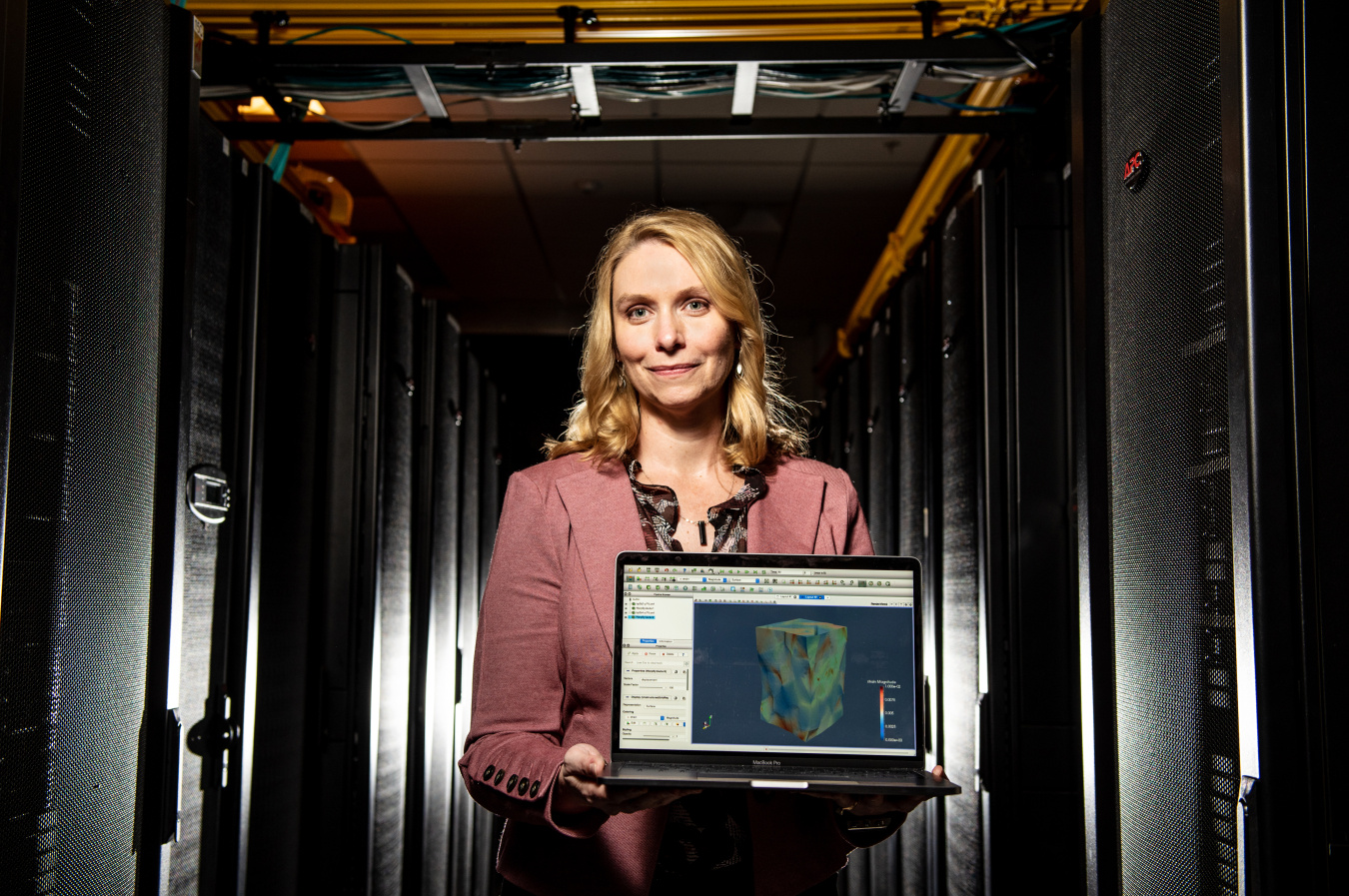Learn why Dr. Erin Iesulauro Barker loves her job as the lead of the Applied Statistics and Computational Modeling group at PNNL.
July 16, 2019
Dr. Erin Iesulauro Barker received her Ph.D. in Civil Engineering from Cornell University in 2006. At Cornell, she was a member of the Cornell Fracture Group where she focused on computational solid mechanics and fracture mechanics as well as software development. She began her career at Los Alamos National Laboratory working on multi-physics and multi-scale simulation capabilities before joining Pacific Northwest National Laboratory in 2010. Her work as a member of the Computational Engineering Group in the Physical and Computational Sciences Directorate has focused on developing models for material behavior and failure at the microstructure scale, developing software tools and frameworks for multi-physics simulations, and tightening the feedback loop between experiments and modeling through data science techniques. In 2017 she became the group manager for the Computational Engineering Group. Starting in 2019, Dr. Barker moved to the National Security Directorate to lead the Applied Statistics and Computational Modeling group.
What inspired you to work in STEM?
Early on I had an interest in how things were built, how they worked, and how structures stayed together. I was surrounded by computers and programming because my parents were software developers. Eventually I blended these interests into my career developing computational models and capabilities to explore how materials behave. My parents encouraged my interests along the way by patiently answering my constant questions, enrolling me in programming classes, and introducing me to engineers and programmers they worked with. I was able to see how people with different backgrounds and expertise could come together to solve complex problems and provide innovative solutions.
What excites you about your work at the Energy Department?
When I went to college, I majored in civil engineering and minored in computer science. At the time, this was a strange combination and I wasn’t even sure how I would bring the two subjects together. Graduate school gave me the opportunity to use my computer science knowledge to push forward computational modeling capabilities to answer deeper questions about how and why materials behave the way they do. The National Labs have allowed me to apply my expertise, as part of multi-disciplinary teams, to a wide range of problems facing our country and world. Seeing models I’ve developed go from helping us understand underlying mechanisms driving behavior to informing manufacturing solutions is very exciting and rewarding.
How can our country engage more women, girls, and other underrepresented groups in STEM?
Our ideas of what we can do when we grow up is shaped by what we see around us. I’d always been a good student in math, but my middle school math teacher just assumed in the 6th grade girls simply started falling behind. Eventually, I internalized this and assumed that I wasn’t allowed to be good at math anymore. It got so bad that I lost confidence in my abilities and started making mistakes I knew were wrong because “I was a girl and I must not know what I’m doing.” My parents stepped in to encourage me and work with the teacher. The teacher changed his behavior and has gone on to encourage countless students not to give up on math. We have made strides as a country towards equality, including in our education system. However, bias still exists and needs to be addressed.
Do you have tips you'd recommend for someone looking to enter your field of work?
My advice is to ask every question you can think of! Ask your parents, your teachers, your counselors. When you meet someone with an interesting career, ask about their experience and how they got there. Many of us got to the same place, working in a STEM field that excites us, by following very different paths. There isn’t a single path you have to follow to get to the STEM career that you dream of.
When you have free time, what are your hobbies?
Music and photography have always been part of my life. I play the flute, piccolo, and piano. I also enjoy getting out into nature and my community to take photographs of the beauty around me. I recently learned to knit. The math of designing and modifying patterns is intriguing to me.
Learn more about our programs & resources for women and girls in STEM at http://www.energy.gov/women

